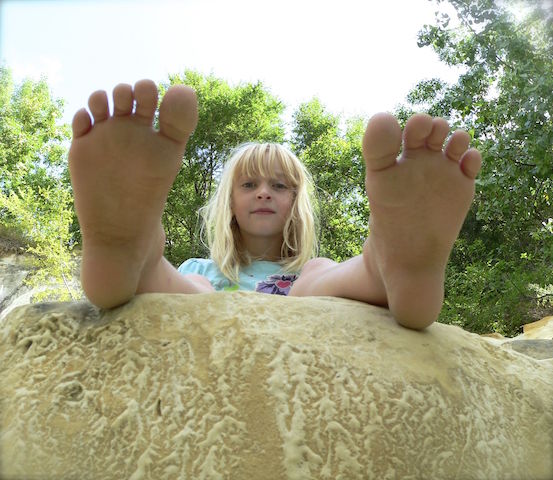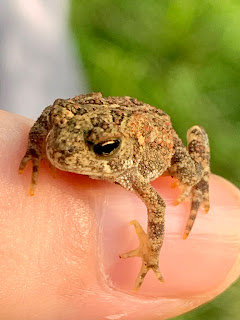As an environmental educator, being outside with children is always a bit like stepping into the unknown. When I take groups of children outside, I generally have an idea of what I’d like to teach or what learning opportunities I’d like to provide. But with nature as a catalyst for learning, I never quite know where the path will lead. Nature, even in our urban ecosystem, is always changing, often unpredictable, and never disappointing.
Much of my teaching time and students’ learning time these days takes place indoors. They are often immersed in technology and disconnected from nature. So when I have the opportunity to take children outside I am always reminded of why it is such important work.
My goals for outdoor work with children:
- children will make a connection with the natural world
- they will engage in physical challenges that help develop gross and fine motor skills and body confidence
- they will engage in social emotional experiences with peers
- their wonder and curiosity will lead them to learn something more about ecosystems, animals, and plants
- children will direct their own learning and have fun
One day last week I took fourth graders outside to play in the fresh snow. I was hoping to find some interesting animal tracks so we could talk about animals that share our space. One student wondered if we might find bugs anywhere, or where they go when there’s snow on the ground. We talked about potential hiding places and decided to investigate the bark on a large boxelder tree. As a few students walked with me toward the tree, one student told me they’d seen a dead squirrel under that tree. What happened next is a beautiful example of emergent nature curriculum at its best. In the children’s words…
Oh, look! There’s a dead squirrel.
I wonder what happened.
Look, there’s blood under its head and on its neck.
(Students look around the area)
Maybe it fell out of the tree.
Maybe another squirrel fought with it.
Maybe a predator got it. A raptor.
We’re by the street. Maybe it got hit by a car.
There’s a piece of bread over here. Maybe it was poisoned.
Or maybe another squirrel tried to get the bread from it.
After discussing possible causes of death, the children turned their attention to other things they know about death – rituals surrounding burial and funerals.
We should bury it and have a funeral.
We can’t dig, the ground is frozen.
We can just cover it with snow and make a tombstone.
Yeah, then people won’t disturb it.
The children made a snow mound on top of the squirrel, found a piece of cardboard to make a tombstone, and wrote “RIP” in the snow on top of the mound.
We should play some music and say some words. Do you have music on your phone?
(I took out my phone and searched for funeral music. “Amazing Grace” began playing.)
Let’s say some things about the squirrel.
He was a troublemaker, always digging in trash cans.
He stole food and lit a forest fire.
Let’s pray.
We hope you go to squirrel heaven.
We are sorry you got hit by a car.
Rest in peace.
We will miss you.
The somber and curious mood somehow turned light and cheerful during the course of their ceremony. Children who were initially concerned and sad ended up smiling and laughing together. They gave each other hugs. They left the squirrel’s grave and went on to play in the snow.
As adults, we are so often afraid to expose children to death in nature or to talk about death at all with them. We rush them past dead animals. We tell them not to look or touch. We try to control their environments and keep them from experiencing sadness or hardship. But what if we take a different approach?
I didn’t avoid the topic of death with these children. I didn’t tell them about my spiritual beliefs or what I think happens after we die. I held space for them to consider an animal’s death, to process their feelings, to participate in rituals they created together for this squirrel, and to be a community of children in a way that is different from their classroom communities. I was a supportive presence while they talked about their ideas. I followed their lead. I connected with those children.
So what do children learn when you take them outside? On that day, this group of children learned that death is a natural part of every living creature’s life cycle. They learned from each other potential causes of this squirrel’s death. They learned that we all have different ideas about death and funerals. They communicated their ideas respectfully and listened to each other. They worked together to bury the squirrel. They felt sadness and worked through that sadness. They laughed and they hugged. I got out of the way and let their learning unfold.



















